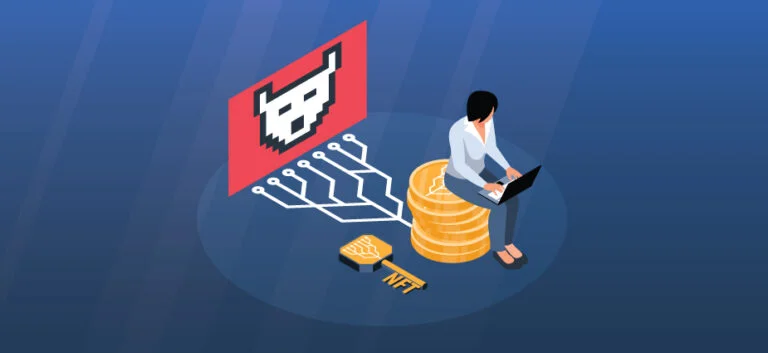A couple of years back, the term ‘Crypto Art’ started surfacing in the digital world. Everyone was in a trance, and even today, some people often ask what the heck crypto art is and why people are going gaga over it.
Today, crypto art is creating shockwaves in the digital art world and bringing innumerable opportunities for modern artists to earn billions and trillions.
Love it or Hate it, that’s your call, but I believe it’s worth learning and understanding.
Today, we have brought this special piece for individuals who are yearning to explore the industry of Crypto Art and everything related to it.
So, without any further ado, let’s take a deeper look at the realm of crypto art.
The Definition – What is Crypto Art? 😊
Crypto art is an umbrella term coined to represent the unique fusion of blockchain technology and digital art.
Crypto art, as a sub-ecosystem inside the realm of cryptocurrencies, aims to preserve immutable forms of digital art such as music C.D.s, paintings, awards, and various artifacts.
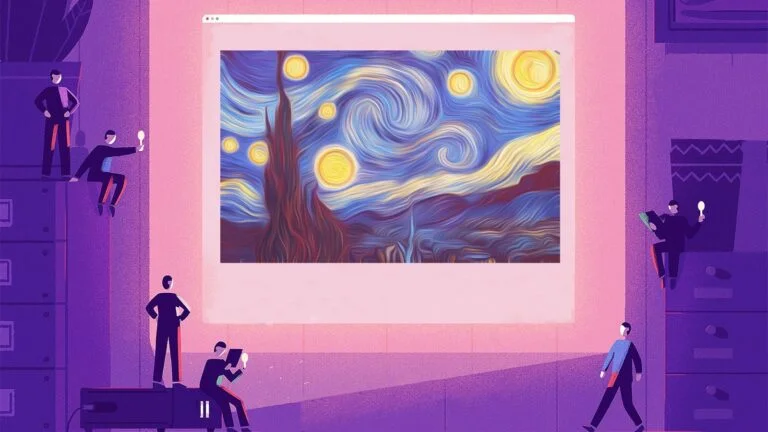
Source: Finshots
Crypto art is stored on the blockchain in the form of non-fungible tokens, or NFTs, and is typically accompanied by a monetary value. The value of crypto art or NFTs, like traditional art forms, is greatly determined by the creator’s legitimacy, the rarity of the work, and its demand in the collector’s market.
NFTs and other kinds of digital art can be publicly validated for authenticity and ownership shift as collectibles. This enables each piece of art to be verifiably unique and to have a monetary worth.
Who are Crypto Artists? 🧑🎨
The artists that create/recreate pieces to be saved on the blockchain are the primary drivers of the crypto art landscape. Although NFTs can depict many different elements of the digital world, the first step is to create digital artwork.
Digital art in the form of GIFs, JPEGs, videos, 3D pictures, and similar art forms can be produced using easily accessible software and a personal computer.
While digital art can be duplicated easily and spread through the internet, crypto artists must authenticate and generate a non-fungible token that is connected to the legitimacy of the art created.
After it has been validated, the artwork may be published on multiple marketplaces and advertised to potential customers.
It is vital to remember that copyright rules apply to crypto art as well, and artists are obliged to develop, mint, and sell unique NFTs while respecting the rights of existing artworks.
Crypto Art and Motion Designers: Why Should They Care?
Well, that’s a great good question.
There’s a very solid reason why a motion designer has probably heard of crypto art by now. This is due to the fact that many collectors are currently interested in motion design objects.
Remember that any sort of digital art can be considered NFT, and the most popular type of art right now is motion design.
The Benefits Crypto Arts offers to Motion Designers 🤑
Creating personal work is always a wonderful thing, whether you’re crypto-arting™ it or not. It enables you to test new applications, sharpen your abilities, and explore.
Storytellers are among the most successful artists in the crypto realm. Artists like Blake Kathryn and Shams Meccea have constantly produced art and amassed big social media followings. Their art demonstrates their individuality and establishes a story.
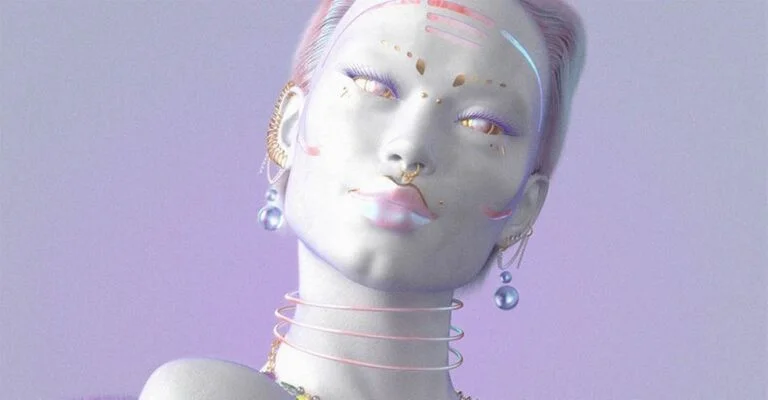
Source: Blake Kathryn
One of the exciting aspects of selling crypto art is that the artist always keeps the copyright and receives royalties from each secondary market sale.
Meanwhile, if you publish your work on Instagram, they may use it in any way they want for their own reasons without asking for permission. They can even alter and tweak your work—or simply sell it!
Some artists approach themselves nearly as if they are their own art brand. It’s fascinating to watch a motion designer’s perspective transition from “I guess I’m simply here to do client work” to “I’m here to make art!”
Instagram and other social media sites benefit from your work. However, crypto art allows artists to earn from their own work.
What a brilliant idea!
How are Motion Designers becoming artists through Crypto Art?
The very great side effect of this crypto art thing is that many motion designers are adopting the perspective of a classic fine artist.
Motioneers are getting inventive and creating a series of motion pieces, like as Filip Hodas’ Dead Meme series, in which the digital art appears to be in a museum, lying on a pedestal with museum labels.
Artists like Gavin Shapiro (well known for his elaborate looping dancing flamingos) are creating innovative series such as Real Collectables for an Imagined Reality, in which he attempts to merge the capabilities of digital and physical art to create a new, one-of-a-kind experience.

Source: Nifty Gateway
He, like Filip Hodas, offers digital art that seems to be tangible art, including “broken” versions. His “broken in production and sold as is” digital kinetic sculpture of a dancing flamingo is a fantastic illustration of how artists are blurring the borders between physical and digital art.
Note: Even motion design studios are now becoming part of this bandwagon. Some are offering this service to others, while some are creating their own crypto art.
If you have the skill, then no one can stop you from making TRILLIONS, and if you don’t, simply hire any design company to create unique crypto art pieces for you.
What Makes Crypto Art Possible?
There are two things that make it possible for artists to legitimize their works, and those are:
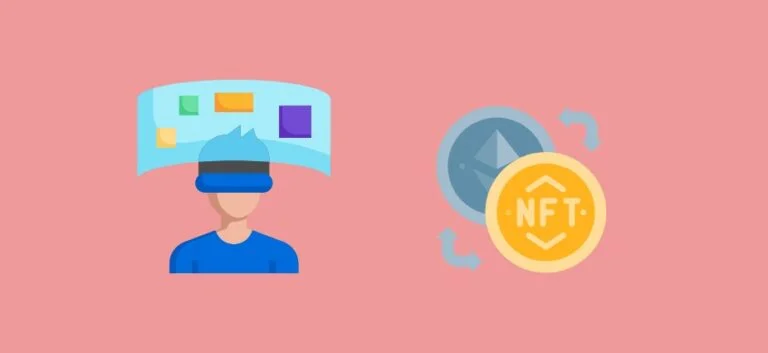
Metaverse
Metaverse is a term coined by Neal Stephenson back in 1992. He is the author of one of the sci-fi novels, Snow Crash. This was the first time when someone actually envisioned a fully-interactable realm comprised of 3D digital objects and human avatars!
The most prominent application of crypto art or NFTs is Metaverse, which uses digital art to represent items in a fully working virtual environment.
Users can create, purchase, and sell virtual copies of shoes, clothing, property, and other possessions in the Metaverse.

Source: WBVR
A metaverse can also symbolize social networks in which individuals from all over the world can gather online for conferences, meetings, and parties.
Users in a typical metaverse setting can communicate with one another and engage in virtual reality (V.R.) activities such as group dancing to music or yoga lessons.
Metaverses have also found applications in the gaming industry, as developers are creating open-world games based on the growing digital economy. Metaverses may be transformed into interactive virtual environments explorable via user-created avatars by including gamification.
Given the unrealized potential of metaverse possibilities, big social media and tech firms continue to investigate numerous use cases geared primarily at enhancing consumer interaction.
For example, Facebook renamed itself “Meta” to better fit with the creation of a metaverse.
Following the footsteps of Facebook, other I.T. behemoths are investigating metaverse capabilities in order to uncover new income streams and client engagement offerings.
Non-fungible tokens (NFT)
NFTs, also known as non-fungible tokens, are what made crypto art probable. While NFTs are similar to any other type of digital picture, including JPEG, GIF, and 3D images, they contain metadata that can be used to establish their worth and ownership on a public blockchain.
NFTs have evolved to represent real-world items in metaverses and other virtual worlds as a result of the limitless possibilities provided by digitalization.
Online virtual stores make it easier to buy digital clothing, shoes, real estate, and other commodities and products.
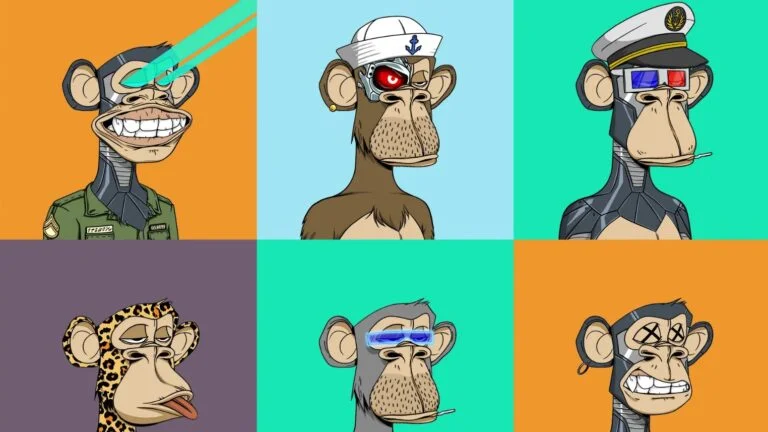
Source: The New Yorker
Furthermore, the genuine market value of NFTs is determined by the rarity and public desire for a certain collection or organization.
Examples of popular NFT use include the release of music records and the distribution of prizes and fan tokens at major sporting events.
Artists use this emerging terrain to produce art and promote it to possible purchasers all over the world, in addition to depicting parts of the actual world.
This also provides enthusiasts with the ability to replicate iconic artworks and provide collectors with a piece of treasured history.
P.S: If you are interested in learning more about NFTs, then give a read to the following resources we have created for NFT enthusiasts:
How Much a Crypto Art Can Cost You? 💰
Even while it’s possible to make a replica of a piece of crypto art simply by downloading the image or taking a screenshot, doing so removes the artwork’s most valuable feature: the metadata or other proof of its originality.
Each digital work has to be given a unique I.D. before it can be labeled NFT and have a monetary value. Accordingly, the NFTs’ distinctive I.D. is what sets the works of art apart and provides evidence of the legitimacy of their value and ownership.
The cost of minting an NFT varies from as low as $1.00 to an average of $900, depending on the service provider and the blockchain host. However, if gas prices are unrealistic, it can increase the cost of minting NFTs.
The ID of a given NFT artwork can be verified on many public blockchains simultaneously. Timestamped information on the blockchain network records the sale or transfer of ownership of a cryptographic work of art.
Depending on how rare something is and how much people want to pay for it, the NFT might be anywhere from a few dollars to millions.
Token generation platforms help artists generate non-fungible tokens from digital works. The method frequently involves the usage of a blockchain cryptocurrency wallet.
Depending on the blockchain network’s stress or current transaction capacity, the artist might be required to pay transaction charges or gas fees in order to update the blockchain with information about the relevant piece of crypto art.
A piece of advice: If you’re planning to hire any design agency, first check out the hourly rates of the motion designers on the freelance platform, you might end up saving a lot of money.
Weighing the Rewards and Risks of Crypto Art
Despite its success, the NFT market has opened the door for scammers and other dishonest people to take advantage of unsuspecting buyers and sellers.
Just like they would in any other setting involving bitcoin and blockchain technology, investors and enthusiasts should do considerable research on NFTs before making any commitments or purchases.
Verifying the NFTs’ blockchain information is also crucial for investors. Metadata is supplementary data on a thing or instance, and in the case of NFTs, this data includes information about the NFT’s minting, blockchain host, ownership, and originator.
The information stored in the blockchain might be seen as the sole reliable way to verify the authenticity of a crypto art offering.
As was previously said, the inventors and secondary market interest in NFTs are integral to their credibility and value.
A high (or any) resale value cannot be guaranteed, however, even if the NFTs look genuine. NFTs have no intrinsic worth; their resale price is determined entirely by the market’s appreciation for the underlying artwork.
The Replication of Crypto Art: Is it Really Possible?
Though many people believe that keeping a copy of a piece of cryptographic artwork on their own computer will allow them to copy it at will, this is not possible in theory.
An example of this is when a user tries to “save” a piece of crypto art but only succeeds in storing a copy of the image without also saving the information that makes up the NFT part of any digital artwork.
In many cases, the creator of an NFT will want to keep full rights to the work, giving them the freedom to produce and sell multiple copies. However, with this data, ownership of NFTs that appear identical can be easily distinguished, and the authenticity of the inventor can be confirmed.
Like other forms of creative expression, crypto art is protected by copyright and falsely claiming authorship might have serious legal penalties depending on local law.
Crypto Art, Metaverse and NFTs: The Future or The Fad? 🔮
The future of crypto art will be determined by the people who have faith in the ecosystem, as well as by the degree to which it is widely adopted.
Crypto art has happily attracted a large number of people ready to buy, sell, and collect art in the form of NFTs due to the involvement of famous artists, musicians, sportsmen, and celebrities.
Art and interactive virtual worlds are two current applications of the crypto art ecosystem. NFTs are becoming increasingly commonplace, and as a result, they are being used to acquire virtual assets like limited-edition apparel and property.
Cryptocurrencies, and crypto art, in particular, are still in the early stages of their development, but they are already transforming the way we perceive the value of intangible cultural assets online.
The future of crypto art is bright, and it holds great promise as a medium for the virtual representation of every facet of human existence.
Other useful resources:
Crypto Art and Motion Designers – FAQs
- What is crypto art?
Crypto art is just like other art pieces but created digitally. The creators use blockchain technology to verify their ownership. Crypto art uses NFTs, also known as non-fungible tokens, for verification.
2. What is crypto art called?
Crypto arts are also known as crypto-collectibles, nifities, or NFT artwork. These are a few digital artworks that can be owned, sold, and bought with cryptographic veracity and security.
3. Is crypto art a real thing?
Blockchain technology can help differentiate real artwork from forgery and verify ownership of a work of art. Cryptographic art is authentic. Crypto art can be confirmed and certified in the same way that regular works of art can.

